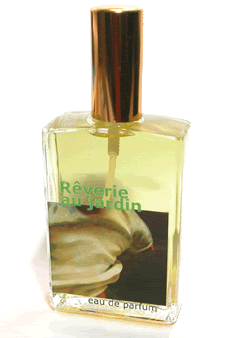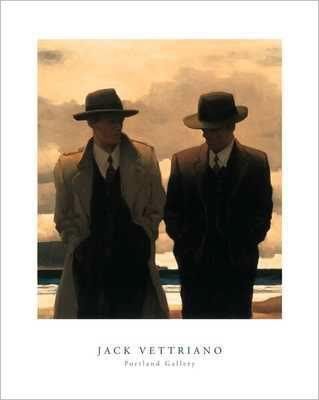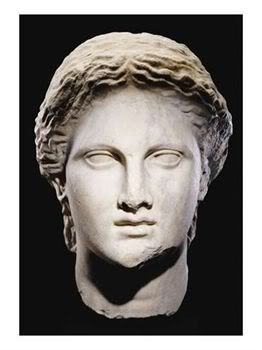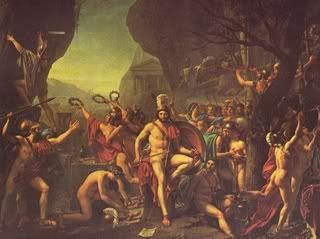
This must be the first review of Andy Tauer’s newest perfume in the line-up of his marvellous creations as I was honoured to receive samples of it ahead of time and I must admit that with each and every one of them Andy manages to evoke a different landscape and a distinct mood.
Andy worked on Rêverie au Jardin for quite a while, informing us through his blog about the process of creation which I find fascinating and a first batch that was kindly sent to me affirmed that he was working on something different than his previous offerings which were exploring the ambery musty rose (Le Maroc pour elle), the beloved dry and yet ever changing mysterious depth of L’air du desert marocain, the multi-facetious image of tarry leather (Lonestar memories) and the earthy delights of Orris.
This was an exploration into the depths of lavender, that classic note between herb and flower that is so often used in men’s colognes, yet it remains a conundrum as to how to interpret it in a fresh and modern way.
The name of the perfume which translates as Daydream in the Garden gives half the game away as the green promise is there, yet there are hidden pleasures to await in that secret garden still.
As Andy himself describes it in the accompanying flyer: “Rêverie au Jardin, a classical fragrance. Twinkling like a star. Caresses your journey though green lands”.
His vision was to create something that interpolates other interesting notes into the context of lavender from the high French Alps in order to show the bloom “in all its facets ranging from herbaceous, spicy green notes to sweet, clean flowers and woody, vibrant chords. I wanted to create a fragrance that captures this complexity and transform it into a perfume. A perfume that melts into the skin, and makes me dream of green lands and twinkling stars.”
It is perhaps time to admit that lavender is a note that rarely if ever catches my interest. Its medicinal character in the raw as well as that of clary sage as well is something that reminds me of mentholated back rubs for alleviating a cold and humidifiers brought in to calm affected sinuses and moody dispositions. It’s no secret I have long been tonsillitis-challenged ever since my childhood and thoughts of that ambience bring me back to unpleasant gulping with difficulty.
However lavender doesn’t have to breach into the medicinal and it can be warm and fresh as well with many admirable qualities; I believe Andy has captured most of them in this new offering.
The first batch I had received months ago was quite incensy and deep and it did not feature too much of the lavender-galbanum opening that the finished product does, which is certainly greener and crisper.
As the final product Rêverie au Jardin is first spritzed on skin a very fresh note of true essential oil of lavender hits the nostrils with the promise of green open lands and clear air like that on the Alps. The inclusion of galbanum, that bracing note of “tossed green salad” according to perfume guru Arctander that is makes a tour de force in Germaine Cellier’s classic Vent Vert is adding to the greenness and there is also a slight citrusy and spicy quality in there which is very welcome.
Yet soon the stroll along the green reveals hidden assets of a warmer nature, like clasping hands of a loved one and inhaling a little human warmth amidst the roses, the iris and the blooms. It is too often that a perfumer is at fault of opting for over-attending either to the top notes in order to catch an audience’s attention or alternatively the base notes in order to make the scent memorable and lingering. In Reverie au Jardin the progression is smooth and justified culminating in heart notes that feature the original incense mood of the first batch, without turning the perfume to a different olfactory family as it happens with Encens et Lavande by Lutens, a perfume that starts as a classic medicinal manly lavender to turn abruptly into an oriental mystic crypt.
In Tauer’s case there is less a desire to shock and more a desire to evoke a uniform vision. The progression into the base notes is seamless from the warm musky heart that is due to the rare and costly hibiscus abelmoschus seed (ambrette seeds, which were explored recently in Chanel’s no.18 from Les Exclusifs with more alarming results) culminating into woodier and balsamic accords of which rich sandalwood is more distinct to my nose married to a sweetish and cosy element which I find out derives from the lovely tonka bean, rich in vanillic undertones with a slight almondy touch, like a cosy cashmere scarf wrapped around the neck as the cool breeze is blowing upon dusk .
Andy also includes oakmoss absolute (to his credit!), vetiver, ambergris and cedar which undoubtedly contribute to the complexity and anchoring of the scent, yet they do not make their presence known per se which is testament to a good blend and a smooth development on skin.

The lasting power of the Eau de Parfum is quite good, with the warmer elements remaining poised for long, while the lavender never ceases to sing atop of them in varying degrees of pitch and it stays within a comfortable radius of the wearer meaning you won’t offend with the sillage but you will also definitely be able to smell yourself without gluing your wrists to your nose all the time.
Andy Tauer uses mostly natural ingredients, natural CO2 extracts, high quality essential oils, absolutes and resinoids. The result is evident in the luxury of the finished product that is as distanced from bourgeois as possibly but never veering into the faux-artistic that so many niche lines pass for novelty and innovation.
His Reverie au Jardin is truly beautiful and I can see myself, a self-proclaimed lavender foe getting a bottle of the cleverly, hip packaged scent for the summer season and revelling into green thoughts of faraway emerald lands.
Rêverie au Jardin officially launches April 21st 2007 and will be available from:
Luckyscents, Los Angeles, USA, click here
Luilei, New York, USA, click here
Eie Flud, Uppingham, UK, click here
Aus Liebe zum Duft, Bruchsal, Germany, click here
Tauer perfumes, Zurich, Switzerland, click here
Medieval art & vie, Zurich, Switzerland, click here
You can also visit this page to download the flyer, the bottle and the packaging of the new Tauer perfume.
Pic is of Holy Maze at Governor's Palace sent to me via email.
.jpg)










